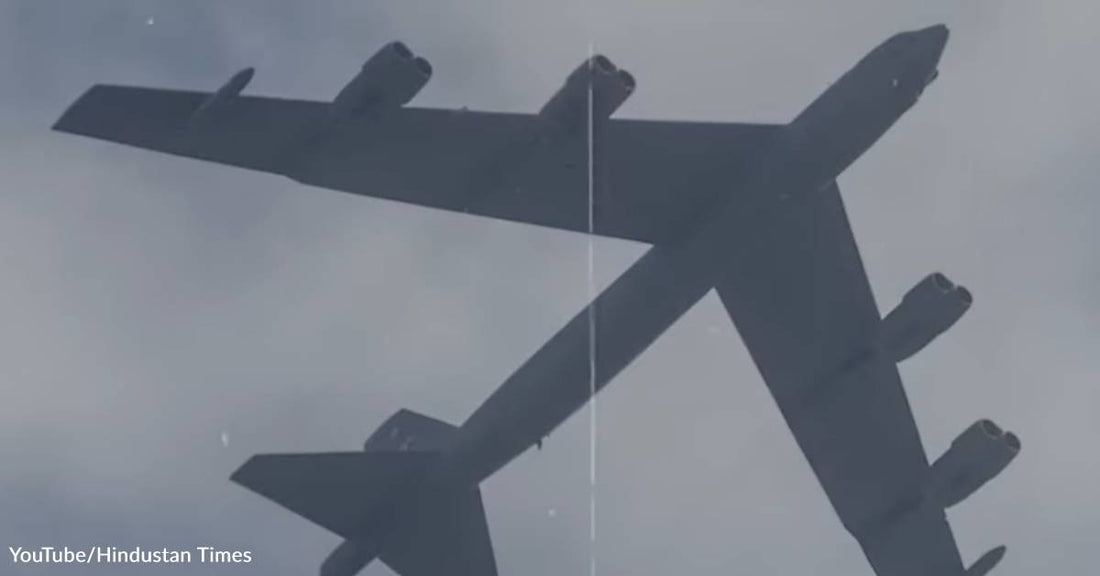The Bomber That Will Not Die
Dan Doyle
This United States Air Force bomber is stretching the limits of time with a kind of stubborn toughness, a lot of grace, and an endless capacity for versatility. It is seemingly immortal compared to most things in today's throw-away world. What is it? The sturdy, relentless B-52 Stratofortress.
This behemoth bomber began service in the USAF during the Cold War in the 1950s. Back then, she was used as a deterrent to the then Soviet Union's bellicose threats toward the U.S. and others. The B-52 could fly fast and high, but more importantly, she could carry and deliver nuclear bombs. That was back in the day when the conflicts were between the communist-ruled U.S.S.R. and the U.S., and they planned and developed a military doctrine called "Mutually Assured Destruction" with its wholly ironic acronym, MAD. It was a kind of potentially mutual suicide compact.
 Photo: YouTube/Hindustan Times
Photo: YouTube/Hindustan TimesMy own experience and knowledge of the B-52 go back to 1968 when I was on my way to Vietnam and when that aerial platform was instrumental in breaking the siege at Khe Sanh during the TET Offensive. My first experience was when I was in transit to Vietnam and was billeted at the big Air Force Base on Okinawa. Our Marine barracks were right at the end of the huge runway where the B-52s took off and landed on their daily missions over Vietnam. When those massive planes with their huge engines roared over the barracks taking off, the entire building shook. To see them coming in for a landing was like watching a bird of prey of unimaginable proportions coming down on its prey.
During the siege at Khe Sanh, flights of 3 B-52s would let loose their huge bomb loads of 2,000-lb. conventional bombs from an altitude of 50,000 ft. Those bombing runs were called Arc Lights. You wouldn't even know they were there until the massive explosions covering huge swaths of land began. In the beginning, they were dropping their loads around 3 miles from the base perimeters, which the NVA responded to by moving closer to our lines in an effort to stop the devastating bombing runs on them. Toward the end of the siege, though, the B-52s were dropping their massive loads of explosive terror within a mile of the base. Those Arc Lights landed close enough that we would feel the shock waves on the base. We couldn't imagine the horror that those Arc Lights caused the NVA who were their targets.
 Photo: YouTube/Hindustan Times
Photo: YouTube/Hindustan TimesThis video will explain how this venerable bomber looks at new upgrades to its engines and radar systems that will keep the B-52 Stratofortress flying until the 2050s. 100 years! It seems unbelievable, but that aircraft's design makes that length of life not only possible but effective.
The B-52 is manned by a five-person crew: a commander, pilot, radar navigator, navigator, and electronics officer. She can carry a diverse payload of weapons, including conventional ordinance, smart weapons, mines, and missiles. She can be modified to carry air-launched cruise missiles and decoys.
 Photo: YouTube/Hindustan Times
Photo: YouTube/Hindustan TimesThe B-52 is being upgraded at present with Ratheon-built AN/APG-79 radar systems like those used by the F/A 18 Super Hornet. New Rolls Royce engines will replace the current Pratt and Whitney engines.
As hard as it is to believe, this old war plane still has a lot of service left in her. Watch this video for more details about this magnificent, sleek, giant bomber that will not quit.
https://www.youtube.com/watch?v=ykdwMcBZK0Q

Dan Doyle is a husband, father, grandfather, Vietnam veteran, and retired professor of Humanities at Seattle University. He taught 13 years at the high school level and 22 years at the university level. He spends his time now babysitting his granddaughter. He is a poet and a blogger as well. Dan holds an AA degree in English Literature, a BA in Comparative Literature, and an MA in Theology, and writes regularly for The Veterans Site Blog.




















